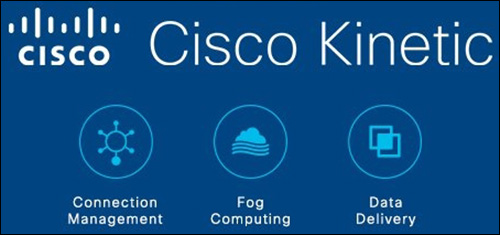The Internet of Things (IoT) has been at the center of Cisco‘s initiatives for several years, through the development of solutions, studies and business strategies. The company expects that by 2020, more than 50 billion handsets will be connected to the Internet, which will mean an increase in complexity for networks, the amount of data transmitted and possible security holes that all of these devices might cause.
In the face of such transformations that the IoT will bring about in the next few years, Laércio Albuquerque, Cisco Brazil’s president, has announced the company’s global strategies to cover both the processing of data near connected devices (thus speeding up automatic decision-making), and increased network security. “We have an analytics platform,” he says, “and we see that the network must provide the security of these devices and the entire network through artificial intelligence” (AI).
According to Marco Sena, Cisco Brazil’s cloud director, the company’s analytics platform, known as Kinetic, will be responsible for collecting information from various IoT devices. This data will then traverse Cisco’s secure network, which will be able to pinpoint anomalies or malware through the analysis of information performed by AI.
According to the executives, there are many challenges when translating the efforts of IoT users into real and secure results. “Imagine a standalone car that needs to stop in an emergency situation,” says Marcelo Silva, Cisco Brazil’s commercial director. “This decision has to be made quickly and without fail, so it is necessary to put the analytics capability within that vehicle.”
With the Cisco concept, data remains within its source, without having to be moved to distant applications, thereby enabling users to control the privacy and security of data, as well as its ownership. “Cisco Kinetic is a new platform class—and IoT data fabric—designed precisely to meet these challenges,” Sena says. This treatment of information is what Cisco calls fog computing, since it extends cloud computing to the edge of an enterprise’s network.
Kinetic makes it easy to connect gateways and IoT devices to a network, the company reports, then securely extracts, normalizes and delivers data from those devices to participants in an ecosystem. The platform plays a central role in enforcing policies defined by information owners, by providing selected data for the private or public cloud, or for other endpoints of a user’s choice.
Cisco’s security technologies are integrated across the entire end-to-end IoT platform. The firm renamed its Smart + Connected Digital Platform as Kinetic, offering a set of tools and guidelines for building smart-city structures.
“Among the platform’s functions,” Albuquerque says, “are extracting data from their sources and making them usable; calculating data to transform them, apply rules and reliably deliver them for business results; and moving the data to the right applications at the right time.”
According to Cisco, Kinetic is a cloud-based platform that helps customers extract, calculate and move data from connected things to IoT applications, in order to provide better results and services. Kinetic gets the right data for the correct applications at the proper time—through the private cloud, the public cloud and hybrid environments—by enforcing policies to support property, privacy, security and data-sovereignty laws. According to the company’s website, “These are all critical requirements for any smart city and community deployment.”
“Cisco Kinetic represents an important milestone for Cisco and our customers who want to unlock the value of data generated by machines, things and connected spaces,” says Jahangir Mohammed, Cisco’s VP of IoT, in a document posted to the company’s website. “Cisco Kinetic for Cities is designed to harness the power of all this data to drive smart-city initiatives. We are excited to align our efforts on developing these IoT technologies that bring simplicity, scalability and interoperability to organizations across all industries.”



